-
Talking to Your Dentist About Gum Disease Treatment
Gum disease, also known as periodontal disease, is one of the most common causes of tooth loss. Proper dental care can often prevent gum disease, but if you already have it, you may need specialized dental care in a dental office in Bel Air, MD. Undergoing an intensive dental cleaning may reverse the disease, provided you follow your dentist’s recommendations for at-home dental care .
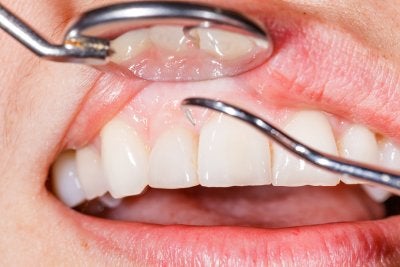
Discuss Your Medical History
When you arrive at the dental office, you can expect to be asked about your medical history. You might consider asking your dentist how he or she thinks you developed gum disease. Some common risk factors of periodontal disease include diabetes, poor nutrition, poor oral care habits, tobacco use, and decreased immune function. Not all of these risk factors can be eliminated, but lifestyle changes can improve others. Consider asking your dentist to evaluate your typical brushing and flossing techniques, and give you some pointers if your routine could use improvement.
Learn About the Recommended Treatment
The treatment options your dentist recommends will depend on how far the disease has progressed. The early stage of gum disease is gingivitis. If you have gingivitis, your dentist might recommend one or two professional dental cleanings. You’ll also need a follow-up visit to make sure your gums are healing. If your dentist recommends this method, be sure to ask how often you should schedule routine dentist visits in the future. If your periodontal disease is more advanced, your dentist may recommend scaling and root planing. This is a deep cleaning method that scrapes away tartar, plaque, and toxins from below and above the gum line. The root surfaces are then smoothed. If your dentist recommends this option, consider asking how else you can support your oral health. Your dentist may prescribe medications, recommend medicated mouthwash, or advise you to switch to an electric toothbrush.
Ask About Maintenance
Whichever treatment option your dentist recommends, be sure to ask him or her about the maintenance phase. Maintaining your oral health is crucial to prevent a recurrence of gum disease. Your dentist may recommend that you return to routine dental cleanings four times per year instead of the usual two visits. During these visits, the dentist will check your gums to make sure they are still healthy.
-
How to Choose Which Cosmetic Dentistry Treatment Is Right for You
Your smile says a lot about your personality. Unfortunately, many people feel as though they must cover up their smiles because of concerns about the appearance of their teeth. If you’re dissatisfied with your smile, it may be time to make an appointment at a cosmetic dentistry office in Bel Air, MD. There are many cosmetic dentistry options that can brighten your smile, resolve chips and cracks, and even address misshapen teeth and unsightly gaps.

Identify your concerns and goals for your smile.
Consider making a list of all of the things that bother you about your smile. You might be upset that your teeth look dingy or downright discolored, or you may be concerned about that gap between your front teeth. Consider which changes to your smile would give you a boost of self-confidence.
Schedule a consultation with a cosmetic dentist.
Once you have identified the problem areas that you would like to resolve, it’s time to schedule a consultation with a cosmetic dentistry provider. When you arrive at the clinic, be sure to share your full medical history, including any medications you’re taking. This is particularly important if you’re concerned about discoloration; certain medications are a common cause of tooth discoloration. During your visit, your dentist will carefully examine your teeth, including the way the upper and lower jaws fit together. He or she will ask you about your goals for your pearly whites and then design a customized treatment plan that’s right for you.
Learn about your cosmetic dentistry options.
Many people can achieve incredible results with tooth whitening alone. In office whitening procedures are particularly effective. The BriteSmile method is particularly effective. It involves applying specialized teeth whitening gel to your teeth. Then, the BriteSmile blue light is applied to activate the gel. During your treatment, you can relax comfortably while your teeth are undergoing a much-needed makeover. If you have deeper tooth discoloration, such as discoloration caused by medications, then you might need a more intensive treatment. Your dentist might recommend Lumineers, which are porcelain veneers that are bonded to the front sides of your teeth. Lumineers are an effective way to instantly camouflage a wide range of dental imperfections-from discoloration and chips to gaps and misshapen teeth. These are just a couple of the cosmetic dentistry options that may be available to you. Your dentist can help you decide which one is right for you.
-
Tips for Caring for Your Sensitive Teeth
If you have sensitive teeth, you may find it uncomfortable to consume very hot or cold beverages and foods. Since tooth sensitivity can indicate the wearing down of your enamel or the recession of your gum line, it’s best to visit a dental office in Bel Air, MD, for a dental cleaning and exam. Proper dental care can resolve your tooth sensitivity by addressing the underlying problem. In the meantime, you can follow the tips explained in this video.
This video offers some at-home dental care guidance for sensitive teeth. It recommends brushing your teeth with a soft-bristled toothbrush and desensitizing toothpaste that contains fluoride. You can protect the enamel on your teeth by avoiding soda and acidic foods, and by waiting 30 minutes after eating before brushing your teeth.
-
Why Adults Are Choosing Invisalign
Braces have long been used to straighten the teeth of adolescents, but individuals of any age can benefit from having perfectly aligned teeth. Properly aligned teeth are essential for biting and chewing food, and for clearly pronouncing words. In some cases, braces might even improve oral wellness, such as when an adult suffers from temporomandibular joint (TMJ) disorder. For adults who live in Bel Air, a dentist is likely to recommend Invisalign.
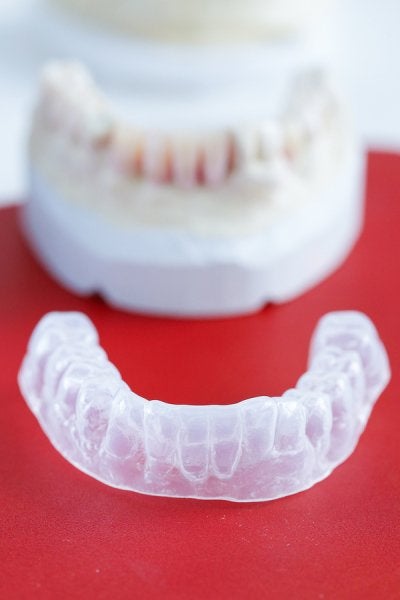
Discreet Alternative
Dentists often recommend Invisalign to their adult patients because it offers a discreet alternative to highly visible metal braces. Although straight teeth are important at any age, the appearance of braces does not lend itself to a professional image. Adults who are concerned about how they look as they go about their day at the office may be more likely to choose Invisalign. Instead of metal brackets, Invisalign gently straightens the teeth with a series of custom-made aligners made of clear plastic . Since these aligners are virtually invisible, no one needs to know when a person is having his or her teeth straightened.
Convenient Aligners
Beyond appearance, Invisalign offers remarkable advantages over metal braces. The aligners are a convenient option because they are easily removable and replaceable. Dental patients simply pop out the aligners when it’s time for a meal. After eating and brushing their teeth, patients can easily snap the aligners back into place. The removable nature of the Invisalign aligners means that there are no dietary restrictions; patients can feel free to crunch on an apple, bite on celery, or chew sugarless gum.
Optimum Oral Health
Another benefit of the removable aligners is that they allow patients to maintain their normal oral health routines without having to fuss with proxabrushes or other special dental care equipment. The teeth can be brushed and flossed as usual. The aligners are easy to clean; a gentle scrub with toothpaste is all that’s needed to refresh them. Because adults can easily maintain their oral hygiene during treatment, there is no increased risk of tooth decay.
-
What Happens During a Root Canal?
If you experience tooth pain and visit an emergency dentist near Bel Air, MD, it’s possible that your dentist will determine that the nerve of your tooth has been damaged by an infection or decay. In these situations, a root canal is indicated. A root canal can save your natural tooth and prevent the need for a tooth extraction. To perform this common dental procedure, your dentist will thoroughly numb the area and create an access opening on the top of the affected tooth. Then, the dentist inserts a series of root canal files into the opening to remove the infected pulp and other damaged tissues. Other dental instruments may be needed to address tooth decay, if this problem is also present.
Once all of the damaged material has been removed from the tooth, the dentist seals the hole with a temporary or permanent filling. In the same office visit, we will permanently seal the tooth if you received a temporary filling. Your dentist will also permanently affix a dental crown on top of the tooth. The dental crown looks just like a natural tooth; it protects the natural tooth from trauma.
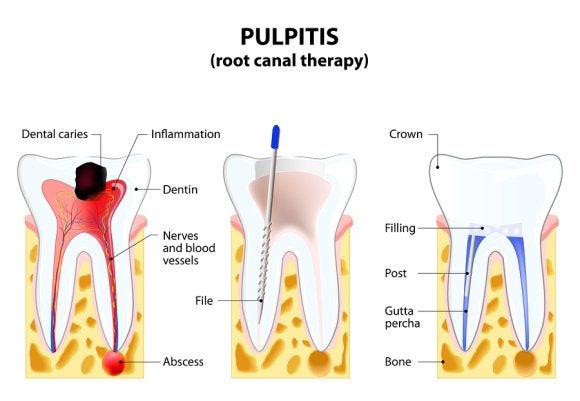
-
What to Do In a Dental Emergency
It’s common knowledge that it’s important to see a dentist every six months for an exam and professional cleaning, but there are some situations that call for an additional visit to a dental clinic in Bel Air, MD. You should see an emergency dentist if you experience oral injuries, significant dental pain, or tooth trauma such as a dislodged tooth. While you’re on your way to the emergency dentist’s office, there are some steps you can take to ease your discomfort.

Toothache
Minor toothaches might not always require emergency dental care. Sometimes, they’re caused by food debris trapped between the teeth. Swish warm water around your mouth and use dental floss to gently clean between your teeth. Never apply aspirin to the gum tissues; instead, you can apply a cold compress to the exterior of your mouth. If your toothache doesn’t go away, you should call an emergency dentist.
Chipped or Cracked Tooth
Chipped and cracked teeth are not an uncommon problem. If possible, save the chipped pieces of the tooth. Rinse your mouth with warm water. If the gums are bleeding, apply a piece of sterile gauze for about 10 minutes to stop the bleeding. Then, visit an emergency dental clinic and be sure to bring the chipped pieces of your tooth. While you’re on your way there, you can apply a cold compress to the exterior of your mouth to relieve your discomfort.
Partially Dislodged Tooth
A cold compress can also relieve the pain of a partially dislodged tooth. If need be, you can take an over-the-counter pain reliever. These are only temporary measures; see an emergency dentist as soon as possible.
Avulsed Tooth
An avulsed tooth is one that has been completely knocked out of the mouth. It might still be possible to save a knocked-out tooth if you get to the emergency dental clinic in time. Pick up the tooth, holding it by the crown. Rinse it with water if it’s dirty, but do not scrub it. It may be possible to reinsert the tooth into its socket; be sure it faces the correct way. If not, place the tooth in a cup and cover the tooth in milk. If you do not have any milk, add water and a pinch of salt. See your dentist within an hour.
-
Aging and Oral Health
Good dental care is important at every age. As you grow older, your dentist might alert you to some problems that you may be at risk of. Aging can bring about changes in the dentin just underneath the enamel. This can cause your teeth to appear dull or darker. A quick trip to a dental clinic near Bel Air, MD , can easily correct this problem. Consider talking to your dentist about teeth whitening or porcelain veneers.
Watch this brief video for some helpful tips on taking good care of your teeth as you enjoy your golden years. This dentist recommends chewing sugarless gum to stimulate the release of saliva if you experience dry mouth due to certain medications. She also recommends making regular dental check-ups, brushing and flossing thoroughly every day, and limiting snacking between meals.
-
Spotting the Signs of Gum Disease
It’s important to visit your dentist in Bel Air, MD, regularly for routine dental care, including professional dental cleanings and exams. This will give your dentist the opportunity to catch early warning signs of dental problems, such as early warning signs of gum disease . Here is a guide to spotting the signs of gum disease, so that you can quickly make an appointment at your dental clinic if necessary.
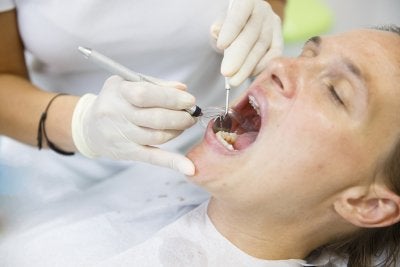
Recognizing Gingivitis, the First Stage of Gum Disease
Gingivitis is the first stage of gum disease, but its progression can be slowed or stopped with proper dental care. The warning signs of gingivitis include mild to moderate inflammation of the gums. Your gums may be red, swollen, and may bleed easily. If your dentist does not quickly treat gingivitis, it can progress to more serious stages of gum disease. Your dentist will determine the most appropriate dental care necessary for your symptoms. This may include daily brushing and flossing, using specialized prescription dental care products, and visiting your dentist regularly for dental cleanings.
More Severe Symptoms of Periodontal Disease, Also Known as Gum Disease
Without regular, daily dental care, gingivitis may progress to more serious stages of periodontal disease, which is also called gum disease. Periodontal disease causes the gums to begin to recede or pull away from the teeth. This creates pockets in the gums that can become infected with bacteria. As the infections spreads, your risk of tooth loss greatly increases. You cannot treat periodontal disease at home, but instead must visit a dentist for specialized dental care.
Signs of Advanced Periodontitis
If gum disease is untreated, it will progress to a condition known as advanced periodontitis. In this stage of gum disease, your dentist may have to perform tooth extractions to remove damaged or diseased teeth. Your tooth will then have to be replaced with a dental implant or dental bridge. Your dentist will first attempt to treat advanced periodontitis using a non-surgical dental care method known as scaling and root planing. This is basically a very intense, thorough dental cleaning during which the dentist removes plaque, tartar, bacteria, and infection from your teeth and gums. If this is ineffective, your dentist will recommend surgical dental care.
-
Missing Teeth and Your Health
If you are missing teeth due to tooth decay, trauma, or a tooth extraction near Bel Air, MD, your dentist will recommend replacing your missing teeth with prosthetics . There are a few cosmetic dentistry options for replacing missing teeth, including dentures, dental bridges, and dental implants. If you don’t seek restorative or cosmetic dental care, you may develop serious complications and health problems.
Watch this video from the American Dental Association to learn more about missing teeth and your health. If your dentist doesn’t replace your missing teeth with cosmetic dentistry restorations, you may suffer from shifting or crooked teeth, jawbone loss, facial deformity, and difficulty eating and speaking. When dentures or dental bridges are anchored to your jawbone using dental implants, you can reduce your risk of health problems. You can also restore your smile, and ensure that you can comfortably eat, speak, and maintain your dental care routine.
-
Save Your Tooth with a Root Canal
If you have a severely infected tooth, you may need to visit an emergency dentist in Bel Air, MD. An emergency dentist can attempt to save your tooth via a root canal procedure , rather than resorting to a tooth extraction. Root canal procedures are a safe, effective method of emergency dental care, and can prevent your infection from spreading while preserving the integrity of your infected tooth.
Prior to your root canal, your dentist will administer anesthesia. He may also give you a mild sedative to help you relax during the procedure. This will ensure that you remain comfortable and pain free throughout your dental care procedure. Once the anesthesia is in effect, your dentist will drill a small access hole into your infected tooth. He will use special dental tools to remove diseased or infected dental pulp, tooth nerve, and tissue from your tooth.
He will then fill the tooth cavity with medication to completely eradicate your infection. Then, he will seal the access hole with dental putty to prevent bacteria from entering. He may place a dental crown on the tooth to preserve its structural integrity and prevent a broken or chipped tooth.
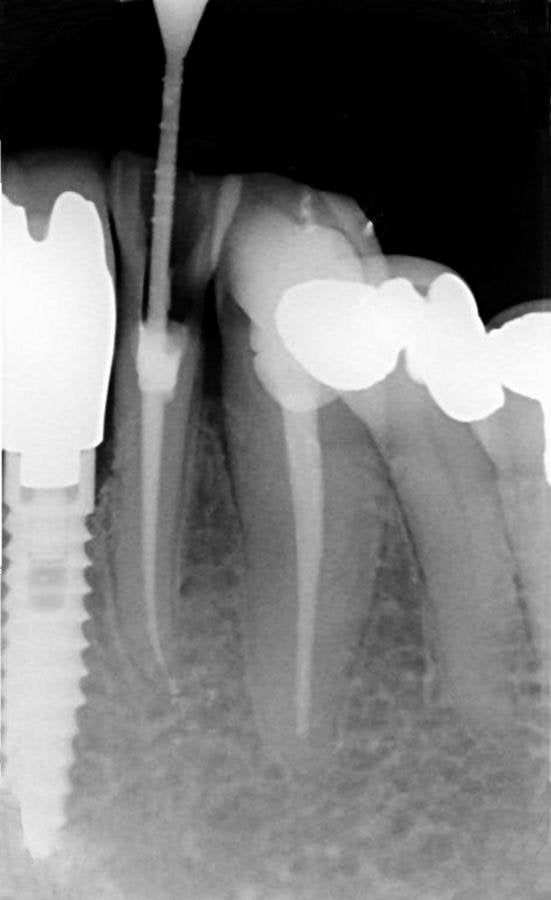
RECENT POSTS
categories
- Uncategorized
- General Dentistry
- Toothache
- Emergency Dentistry
- Family Dentistry
- Receding Gums
- Cosmetic Dentistry
- Veneers
- Gum Disease
- Gingivitis
- Dental Crowns
- Orthodontics
- Dental Implants
- Root Canal
- Wisdom Teeth
- Teeth Whitening
- Your Smile
- Composite Fillings
- Lumineers
- Dentures
- Invisalign
- BrightSmile
- Dental Bridge
- Abscessed Tooth
- Sealants
